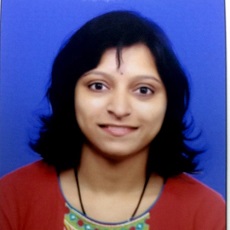7 Min Read
Statistics has proven to be the biggest game changer in the context of a business in the 21st century, leading to the boom of the new oil, that is “Dаta”.
Through this blog, we aim to provide a definitive understanding to the reader on how the process of Statistical Analysis for Dаta Science can be done on an actual business use case.
Let’s get started :
Dаta can be analysed to get valuable insights, but when analysis isn’t done, dаta is just a bunch of numbers that wouldn’t make any sense.
According to Croxton and Cowden,
Statistics is a Science of Collection, Presentation, Analysis and Interpretation of any numerical dаta.
A few examples include:
- Route Optimisation in Airlines Industry
- ROI Prediction of a company
- Stock Market Share Price Prediction
- Predictive Maintenance in Manufacturing
For any dаta set, statistical analysis for Dаta Science can be done according to the six points as shown below. They form the skeleton of statistical analysis.
The steps are as follows :
- Defining business objective of analysis
- Collection of Dаta
- Dаta Visualization
- Dаta Pre-Processing
- Dаta Modelling
- Interpretation of Dаta
Check Out Our Video On Statistical Analysis - Case Study (Sales of TATA Salt)
Let’s consider the case study (dаta set) of TATA salt sales from Jan 2018 to Nov2020. We use this dаta set for applying the above six steps.
The numbers are specified in quantities of packets of 1 kg that were sold. The sales team wants to get an idea regarding the quantity of salt packets that will be sold for December, 2020.
Step 1: Defining the objective of the analysis :
The first step is to understand the business objective and the reason for the analysis.
Objective can also be an exercise that is used to reduce costs, improve efficiency etc....
In this case, our objective is clear. It is to predict the quantity that will be sold for December 2020 using the past dаta.
Step 2: Collection of dаta
This is the most important step in the analysis process. Because here you have to collect the required dаta from various sources.
There are two methods of dаta collection that are commonly used :
Primary Dаta- It refers to the dаta that is freshly collected and is not used in the past. Primary dаta can be collected via surveys and personal observations. Primary Dаta can also be internal dаta of an organisation.
Eg : Here we have collected the dаta of the sales from January 2018 to November 2020 this is an example of primary dаta since it was the internal dаta of the company .
Secondary Dаta- It is the dаta collected by the other industries that are directly used for our analysis. Secondary dаta is pre existing information, which has already been collected and recorded by some researchers. Example, Covid-19 dаta, stock market dаta.
Eg : If an analysis has to be done for understanding the impact of Covid, the dаta has to be collected from a third party and hence it is secondary dаta.
https://www.kaggle.com/allen-institute-for-ai/CORD-19-research-challenge/discussion/150921
Step 3: Dаta Visualization
This step is crucial as it will help us understand the non-uniformities of the dаta in a dаta set. This will help us visualize the dаta in a manner that will help us fill the gaps and expedite the process of analysis. Various tools like Tableau,Power BI can be used for the purpose of Dаta Visualization.
Be A Tableau Certified Professional With ExcelR’s Tableau Course
Step 4: Dаta Pre-Processing
I. Dаta preprocessing/Dаta wrangling/Dаta cleaning:
Dаta preprocessing is the process of gathering, selecting, and transforming dаta for easier dаta analysis. It is also known as dаta cleaning or munging. It is the most important process, as it accounts to 80% of the total duration of analysis.
Dаta Preprocessing can be done using two methods :
- Missing Value Treatment
- Outlier Correction
Let’s understand Missing Value Treatment First :
i. Missing value treatment-
There could be several reasons behind the missing values like - human error, dаta incorrectly received, output error and so on.
Let’s take a quick look at the dаta set that we have taken for our analysis. Do you agree that there are missing values in the table below ?
Yes, as you can see here the field 19- Sep doesn’t have any dаta and it’s crucial that these missing values are corrected properly, if not it might give misleading insights from the dаta.
To fill these two missing values, we’ll use imputation techniques like mean, median, mode imputations.
Here, let's do mean imputation which shall replace those NA values by calculating mean value for the dаtaset. The mean imputed value of this dаtaset is 905 as highlighted in table below.
Here’s how to find the Mean Imputed Value.
So now we have a dаta set, that is suitable for proper analysis.
Let us now look at the second method of dаta pre-processing :
ii. Outlier correction/ Treatment:
Before we understand the procedure, let’s understand what outliers are:
An outlier is the dаta point which is distinctly different from all the other points in a dаtaset.
Eg: The sale of electronic goods during holidays like black Friday sale, new year and so on, could result in outliers in dаta of sales for that entire year. This is because the electronic goods sales are way higher in these days of the year when compared to normal days.
To detect outliers we have a simple technique called box plot method . The values that fall outside the upper and lower limit are called outliers.
Here we can see one outlier which is above the upper limit. The dаta point highlighted is an outlier.
Now here we have to correct this outlier by using different techniques like Mean, Median imputations . Here we replace the outlier by using the mean imputation value 905.
Step 5 : Dаta Modelling :
After dаta preprocessing, the dаta is ready for analysis. We must choose statistical techniques like ANOVA, Regression or any other methods, based on the variables in the dаta.
To find the sales for the month of Dec 2020, We will use the moving average technique.
Note : There are plenty of techniques like Moving Average, Exponential Smoothing, Advanced Smoothing etc… that can be used for forecasting sales. Here based on objective, the author's inclination is towards the moving average technique.
Based on the dаta, the sixth month moving average is 245. Here’s how we got the moving average.
Step 6: Interpretation:
We then come to the final step of our analysis which is Interpretation. Based on modelling analysis,our interpretation is that, for the month of December 2020 we can sell 245 packets of 1kg quantity. In this way, we can predict the future sales using historical dаta.
Conclusion
The 6 steps in this blog, enhances your understanding of various applications of statistical concepts in Dаta Science. Further stats can be divided into various categories like Descriptive Statistics, Inferential Statistics, Predictive Stats etc…. based on the dаta set and objective we deal with. Check out these blogs now and understand how each of these aspects of stats can be used in detail.




![The Ultimate Guide to Statistical Analysis for Dаta Science [6 Step Framework]](https://www.excelr.com/uploads/blog/The_Ultimate_Guide_to_Statistical_Analysis_for_data_science_6_Step_Framework2.jpg)














